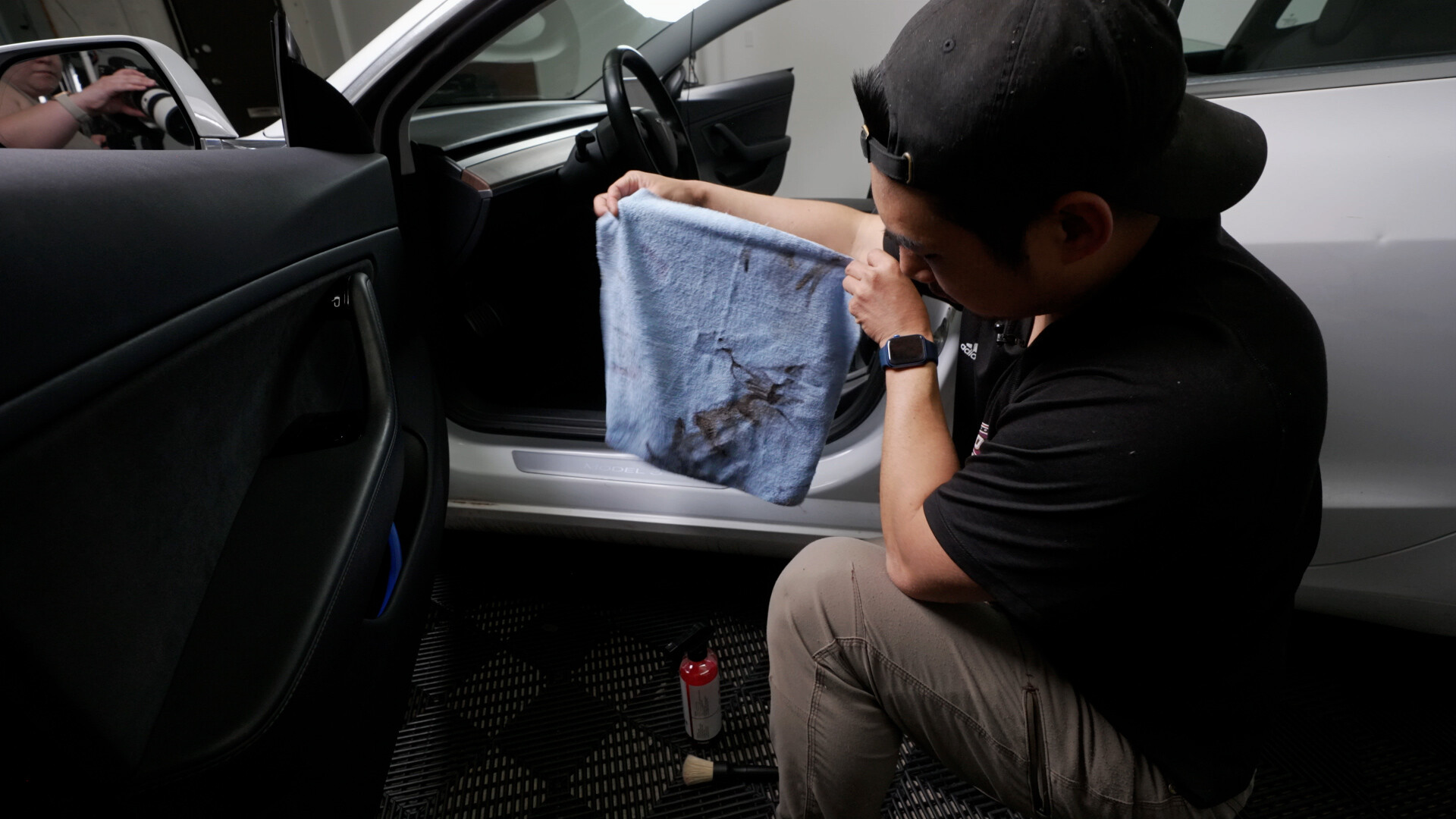Even though we would love for you guys to buy our microfibers over and over again, you actually can get many more uses out of them! They are pretty sustainable and last a long time IF you know how to take care of them. So, here we’ll show you how to organize, wash, and dry your microfibers.
Microfiber Overview
Microfibers consist of polyester and polyamide. The fibers are split into fine strands that are porous and moisture wicking, which helps them dry quickly. So, while the polyester creates structure, the polyamide adds density and absorption, essentially making them fluffy and the fibers sticky enough to pick up dirt, grime and cleaners.
Another term to keep in mind is GSM, which is basically the measure of how thick and absorbent a microfiber towel is. 200-350 is the general amount you want to look for. These would be the interior and waterless microfibers. If it’s any less, it won’t pick up enough and won’t last as long. If it’s any more, you’re looking at a drying towel due to how fluffy and absorbent it will be, and not at a cleaning towel. I’m explaining this part because you typically want to wash different types of microfibers separately based on level of dirtiness AND GSM.
We have another blog all about the different types of microfiber towels if you’re interested in learning more about that.
Organize
First, separate them based on what they were used to clean. They can be in categories such as:
Second, I organize by level of dirtiness:
- A – Light soil/barely anything
- B – Medium soil/just a few dirt stains
- C – Pretty dirty/on the edge of garbage
- D – Dump it (or reuse it in your home)
NOTE: It’s important to wash from least to most dirty to avoid cross contamination. I wash all my Interior As together, then Bs, and then Cs. Next, I wash Exterior As, Bs, and Cs. Lastly, drying towels will go in because of the GSM difference. In-between each wash, wipe the washer out with our interior cleaner or another all-purpose cleaner. When you’re completely finished running loads of microfibers, you want to run a load with nothing in it on hot water before washing clothes and household items again.
Now, before you wash, you might want to pre soak.
Pre-Soak
This step would be especially helpful for the Cs. If they have bad stains, simply spray interior cleaner or another all-purpose cleaner on the parts and let it soak. Another option is to get a bucket with lukewarm water in it and soak it with some detergent before putting it in the washer.
Important: Make sure it’s lukewarm water and not hot water.
Wash
Everyone has different washer and dryer capabilities, but I’ll speak very generally about what works. If you are looking for one currently, I would suggest NOT having an agitator, which is the pole in the middle of some dryers. The fibers can get caught on it and can end up ruining it. Wash in the order explained earlier, and don’t overfill. 50-60% full is ideal.
Detergent: Make sure it’s liquid, low foaming, highly concentrated, and has no scent or softeners. I use 7th Generation and only a couple squirts from it. Do NOT use powder, because it leaves soap residue behind that can harden and scratch your car.
Settings: Heavy Duty or normal load (You want high water), fast spin cycle (more than one rinse is good too), warm/cold water, and heavy soil.
Dry
The reason you want a fast spin cycle is because you don’t use heat to dry. It’s best to use tumble dry or air fluff – whichever setting you have that doesn’t use heat. It may take a couple of hours to dry, and some fancier dryers have moisture sensors so it will stop when it feels that it is dried. If you are in a pinch, you can use delicate. This will, however, diminish its quality. Heat actually burns the fibers, making them curl up and harden. Then, they’ll scratch your car and stop picking up the things it needs to.
Before you transfer the micros over to the dryer, take note of these things:
- Clean out the dryer to make sure no balls or dryer sheets are in there. These particles will become entrapped in the microfibers and they’ll be ruined.
- Clean out the lint collector as well, because microfibers will pick up any lent it can touch.
- You can air dry, just make sure it’s not outside. Even inside, it does give some room for contamination from things like lint, dust, and pet hair around where it’s drying.
Restock
After they dry, put them in separate, CLEAN bags based on if they are A B or C levels and their use. Inspect them as you go, making sure nothing is trapped in them. I would also suggest before you use them again, do another quick visual Inspection. Look for stains, a rough feel, and fraying. Pay attention to see if it’s streaking when you clean too. These are signs of a D microfiber.
Instead of throwing the D microfibers away, you can reuse them in your home for cleaning things like marble counters or tiles as long as they weren’t used in engines or anything that can leave residue behind. You can also use them in engine bays or really dirty areas before tossing it. This is just a great way to be able to reuse microfibers.




